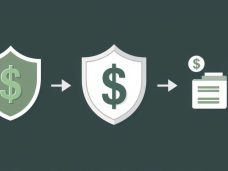Looking to build wealth while you sleep? Discover seven proven passive income opportunities that can generate over $1,000 monthly with minimal ongoing effort. This comprehensive guide explores realistic options for creating sustainable income streams, from dividend investing to digital products, with actionable steps to get started today.
Key Takeaways:
- Explore 7 legitimate passive income streams capable of generating $1,000+ monthly
- Learn the initial investment or effort required for each method
- Understand the realistic timeline from setup to consistent income
- Discover strategies to scale these income streams over time
- Find out which passive income methods best match your skills and resources
Introduction: Building Income That Works For You
The concept of making money while you sleep isn’t just a dream—it’s increasingly becoming a necessity in today’s economic landscape. Passive income provides financial security, freedom, and the opportunity to focus on what truly matters in life rather than trading hours for dollars.
However, creating truly passive income streams requires either significant upfront capital, specialized knowledge, or substantial initial effort. This guide cuts through the unrealistic promises often found online to provide actionable insights on seven legitimate passive income opportunities that can generate $1,000 or more monthly with the right approach.
What Makes Income Truly “Passive”?
Before exploring specific strategies, it’s essential to understand what genuine passive income entails:
- Initial Investment vs. Ongoing Effort: Truly passive income requires minimal ongoing maintenance once established
- Scalability: The ability to grow income without proportionally increasing time investment
- Sustainability: Income sources that can generate returns consistently over years or decades
- Risk Assessment: Understanding the potential downsides and volatility of each income stream
Let’s examine seven proven passive income strategies that meet these criteria and can potentially generate $1,000+ monthly.
1. Dividend Stock Investing
How It Works
Dividend investing involves building a portfolio of stocks that regularly distribute a portion of company profits to shareholders. By focusing on companies with strong dividend histories and growth potential, investors can create a reliable income stream that often increases over time.
Requirements for $1,000 Monthly
- Initial Capital: Approximately $150,000-$200,000 invested in dividend stocks yielding 6-8% annually
- Knowledge Required: Basic understanding of stock market fundamentals and dividend metrics
- Time to $1,000 Monthly: 5-10 years of consistent investing and dividend reinvestment
- Ongoing Effort: Quarterly portfolio review and occasional rebalancing (2-3 hours monthly)
Getting Started
Begin with blue-chip dividend aristocrats (companies that have increased dividends for 25+ consecutive years) like Johnson & Johnson, Procter & Gamble, and Coca-Cola. Consider dividend-focused ETFs like SCHD or VYM for instant diversification. Reinvest all dividends during the accumulation phase to accelerate growth through compounding.
2. Rental Property Investing
How It Works
Rental properties generate monthly income from tenant payments while potentially appreciating in value over time. With proper management systems in place, rental income becomes increasingly passive.
Requirements for $1,000 Monthly
- Initial Capital: $100,000-$150,000 for down payments (varies by location)
- Knowledge Required: Understanding of real estate markets, property management, and basic maintenance
- Time to $1,000 Monthly: 1-3 years depending on property selection and financing terms
- Ongoing Effort: 2-5 hours monthly with professional property management (adds 8-12% cost)
Getting Started
Focus on cash-flow positive properties in stable neighborhoods with strong rental demand. The BRRRR method (Buy, Rehabilitate, Rent, Refinance, Repeat) allows investors to recycle capital across multiple properties. Consider house hacking (living in one unit while renting others) to reduce personal housing expenses while building your portfolio.
3. Digital Product Creation
How It Works
Digital products—including e-books, online courses, templates, software, and digital art—can be created once and sold repeatedly with minimal ongoing costs, making them ideal passive income generators.
Requirements for $1,000 Monthly
- Initial Capital: $500-$2,000 for creation tools and initial marketing
- Knowledge Required: Expertise in a specific subject area and basic digital marketing skills
- Time to $1,000 Monthly: 6-18 months of content creation and audience building
- Ongoing Effort: 5-10 hours monthly for customer support and occasional updates
Getting Started
Identify problems you’re uniquely qualified to solve within a specific niche. Create professional-quality content that outperforms free alternatives. Establish automated sales funnels with email sequences and content marketing to drive consistent sales. Platforms like Teachable, Podia, and Gumroad handle payment processing and delivery.
4. Affiliate Marketing with Content Websites
How It Works
Content websites monetized through affiliate marketing earn commissions by recommending products or services. Once created, high-quality content continues generating traffic and revenue for years with minimal updates.
Requirements for $1,000 Monthly
- Initial Capital: $1,000-$3,000 for website setup, content creation, and SEO tools
- Knowledge Required: Content creation skills, SEO fundamentals, and niche expertise
- Time to $1,000 Monthly: 12-24 months of consistent content creation and audience building
- Ongoing Effort: 10-15 hours monthly for content updates and website maintenance
Getting Started
Select a profitable niche with commercial intent where you can provide genuine value. Focus on creating comprehensive, solution-oriented content targeting specific buyer keywords. Build email lists to create multiple touchpoints with your audience. Amazon Associates, ShareASale, and direct brand partnerships offer diverse monetization opportunities beyond display advertising.
5. Automated E-commerce Stores
How It Works
E-commerce businesses leveraging dropshipping, print-on-demand, or fulfillment services can operate with minimal day-to-day involvement once systems are established.
Requirements for $1,000 Monthly
- Initial Capital: $3,000-$10,000 for product development, website creation, and initial marketing
- Knowledge Required: Understanding of e-commerce platforms, digital marketing, and supply chain basics
- Time to $1,000 Monthly: 6-12 months of store optimization and marketing refinement
- Ongoing Effort: 15-20 hours monthly for inventory management and customer service (can be outsourced)
Getting Started
Rather than competing in saturated dropshipping markets, focus on creating unique print-on-demand products or private label items that solve specific problems. Develop automated email sequences for cart abandonment and customer retention. Consider using Shopify apps or virtual assistants to handle customer inquiries and order processing, making the business increasingly passive.
6. REITs and Real Estate Crowdfunding
How It Works
Real Estate Investment Trusts (REITs) and crowdfunding platforms allow investors to earn income from real estate without the responsibilities of direct ownership.
Requirements for $1,000 Monthly
- Initial Capital: $120,000-$180,000 invested across REIT dividend stocks or crowdfunding platforms
- Knowledge Required: Basic understanding of real estate fundamentals and investment structures
- Time to $1,000 Monthly: 3-7 years through consistent investment and compound growth
- Ongoing Effort: 1-2 hours monthly for portfolio review (truly passive)
Getting Started
Publicly traded REITs like Realty Income (O), Digital Realty Trust (DLR), and Crown Castle (CCI) offer liquidity and reliable dividends. Platforms like Fundrise, RealtyMogul, and Streitwise provide access to private real estate deals with lower entry points. Diversify across property types (residential, commercial, industrial) and geographic regions to reduce risk while maintaining strong income potential.
7. YouTube Channel Monetization
How It Works
YouTube channels earn passive income through ad revenue, affiliate marketing, sponsorships, and merchandise sales. Once videos are published, they continue generating views and revenue for years.
Requirements for $1,000 Monthly
- Initial Capital: $1,000-$3,000 for basic equipment and editing software
- Knowledge Required: Video creation skills and understanding of YouTube algorithm
- Time to $1,000 Monthly: 12-24 months of consistent content creation (2-4 videos weekly)
- Ongoing Effort: Becomes increasingly passive after building a content library (10-15 hours monthly)
Getting Started
Focus on creating evergreen content that remains valuable long-term rather than news or trend-dependent videos. Tutorials, product reviews, and educational content typically maintain viewership longer than entertainment videos. Build a content calendar focusing on higher-CPM niches like finance, technology, or business. Diversify revenue streams through channel memberships, Patreon support, and digital product sales to reduce dependence on fluctuating ad rates.
Combining Strategies for Accelerated Results
While each of these methods can eventually generate $1,000+ monthly, combining complementary strategies often produces faster results. For example:
- Content Ecosystem: A finance blogger might leverage the same expertise across a website (affiliate marketing), YouTube channel (ad revenue), and online course (digital product)
- Real Estate Portfolio: Combining REITs for liquidity with direct property ownership for higher returns
- Investment Ladder: Using dividend stock income to fund digital product creation or e-commerce startup costs
The key is selecting strategies aligned with your skills, interests, and available resources rather than pursuing random opportunities.
Realistic Timelines and Expectations
Creating truly passive income requires patience and persistence. Most people fail because they underestimate the upfront work required or abandon efforts before reaching the tipping point where income becomes meaningfully passive.
For most of these strategies, expect:
- Months 1-6: Learning phase with minimal income
- Months 7-18: Growth phase with increasing but inconsistent returns
- Months 19-36: Stabilization and scaling toward the $1,000+ monthly target
- Beyond Year 3: True passivity with minimal maintenance requirements
The Bottom Line
Building passive income streams capable of generating $1,000+ monthly is achievable with the right approach and realistic expectations. The methods outlined in this guide require either significant upfront capital, specialized knowledge, or substantial initial effort—there are no true shortcuts.
By selecting strategies aligned with your resources and consistently reinvesting early returns, you can gradually build a portfolio of income streams that provide financial security and freedom. The most successful passive income entrepreneurs typically focus on mastering one method before expanding to others, allowing them to leverage expertise across multiple channels.
Remember that the most valuable passive income streams often take the longest to build but provide the greatest long-term stability. Begin with clear goals, develop systematic processes, and maintain consistent effort until you reach the critical mass where your assets truly work for you.
Disclaimer: This article is for informational purposes only and does not constitute financial advice. The income potential of each method varies based on numerous factors including market conditions, individual skill level, and geographic location. Always conduct thorough research and consider consulting with financial professionals before making investment decisions.
Last Updated: March 23, 2025
Frequently Asked Questions About Building Passive Income
How much money do I need to start building passive income?
The initial capital required varies significantly by method. Dividend investing and REITs typically require $25,000+ for meaningful income, while digital products, content creation, and YouTube channels can be started with under $2,000. Real estate generally requires the highest initial investment ($20,000-$50,000+ for down payments) unless using house hacking strategies. The key is matching your available capital with the appropriate strategy rather than stretching resources too thin.
How passive are these income streams really?
True passivity exists on a spectrum. Dividend investing and REITs require minimal ongoing work (1-3 hours monthly) once established. Digital products and affiliate websites become increasingly passive over time (5-15 hours monthly) but require occasional updates. E-commerce and rental properties typically require the most ongoing management (10-20 hours monthly) unless you invest in outsourcing these tasks. No income stream is completely passive during the setup phase, which typically requires significant time and effort.
How long until these income streams become truly passive?
Most passive income streams follow a similar pattern: high initial effort followed by decreasing time requirements. Digital products and affiliate websites typically require 12-18 months of consistent work before becoming predominantly passive. YouTube channels need 18-24 months and 100+ videos before the content library generates sustainable passive income. Investment-based methods like dividend stocks and REITs are passive from day one but require longer timeframes (5-10 years) to reach the $1,000 monthly target through compounding.
Are these passive income methods still effective in 2025?
Yes, these core passive income strategies remain effective despite changing market conditions. However, tactical approaches have evolved: content creators now focus more on solving specific problems rather than broad topics; real estate investors increasingly target secondary markets for better cash flow; digital product creators emphasize community components alongside core offerings. The fundamentals of creating assets that generate ongoing value remain unchanged, even as implementation details evolve with market conditions and technology.
Do I need to pay taxes on passive income?
All passive income is subject to taxation, though specific treatment varies by income type and location. Dividend income may qualify for preferential tax rates. Rental income allows for depreciation and expense deductions. Digital product and affiliate income typically require quarterly estimated tax payments as self-employment income. Proper record-keeping and working with a tax professional familiar with your specific income streams is essential to maximize after-tax returns while maintaining compliance.
Which passive income stream is best for beginners?
For most beginners, starting with digital product creation or affiliate websites provides the optimal balance between low initial capital requirements and achievable expertise. Dividend investing (beginning with dividend ETFs) offers the lowest learning curve but requires more capital for meaningful returns. YouTube channels present the lowest financial barrier to entry but demand comfort with being on camera and consistent content creation. The “best” starting point ultimately depends on aligning your existing skills and resources with the strategy that can leverage them most effectively.
Can passive income replace my full-time job?
Replacing employment income typically requires multiple passive income streams developed over several years. Most successful passive income entrepreneurs maintain their jobs during the building phase, which often takes 2-4 years before generating employment-replacing income. A realistic approach involves gradually scaling passive income while reducing work hours, rather than an immediate transition. Focus first on building passive income equal to your essential monthly expenses (housing, food, utilities) before targeting full replacement of your salary.
How do I know which passive income method is right for me?
The most successful passive income strategy aligns with your existing knowledge, available resources, and personal preferences. Consider these factors: 1) Available startup capital (high: dividend investing, real estate; low: content creation, digital products); 2) Existing expertise (technical, creative, financial, subject-matter); 3) Risk tolerance (higher: e-commerce, YouTube; lower: REITs, dividend stocks); and 4) Preferred working style (public-facing vs. behind-the-scenes). The strategy that leverages your strengths while fitting your lifestyle constraints will likely prove most sustainable.
How do I scale passive income beyond $1,000 monthly?
Scaling beyond $1,000 monthly typically involves either: 1) Expanding within your chosen method (more properties, larger investment portfolio, additional digital products); 2) Creating systems to reduce your time involvement through outsourcing or automation; or 3) Leveraging expertise across complementary income streams. The most efficient scaling strategy is typically reinvesting 100% of initial passive income to accelerate growth until reaching your target monthly income. Each passive income stream becomes easier to scale after reaching profitability.
What are the biggest mistakes to avoid when building passive income?
Common pitfalls include: 1) Spreading resources too thin across multiple strategies rather than mastering one; 2) Underestimating the upfront work required before income becomes passive; 3) Failing to reinvest early returns to accelerate growth; 4) Choosing methods based solely on potential returns without considering skill alignment; 5) Neglecting tax planning and record-keeping; 6) Abandoning efforts just before reaching the tipping point where significant passive income begins; and 7) Not creating systems and documentation to reduce your ongoing involvement as income scales.



